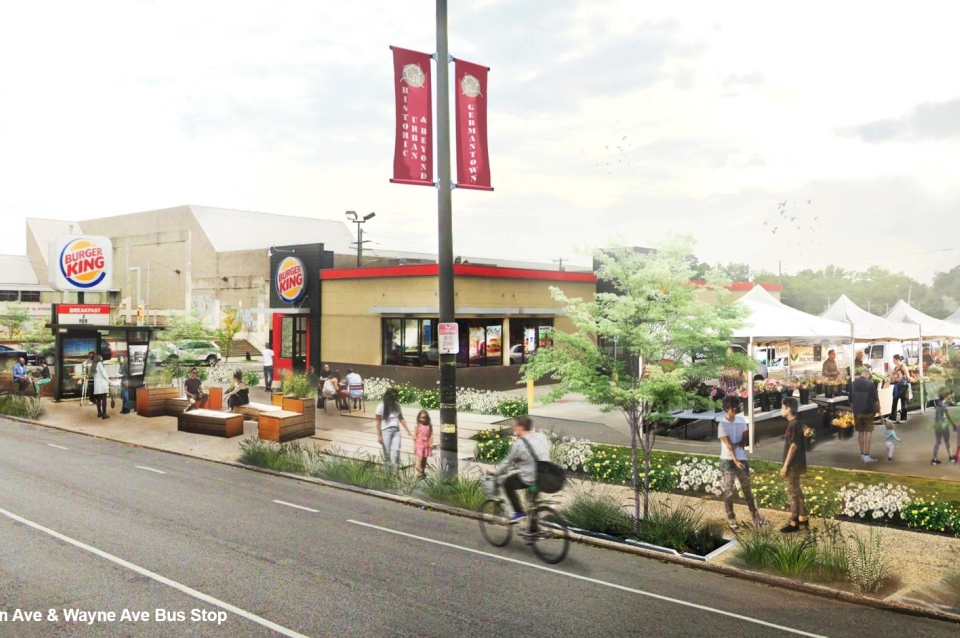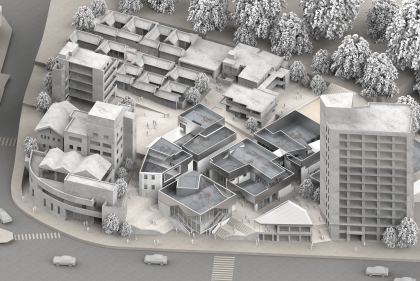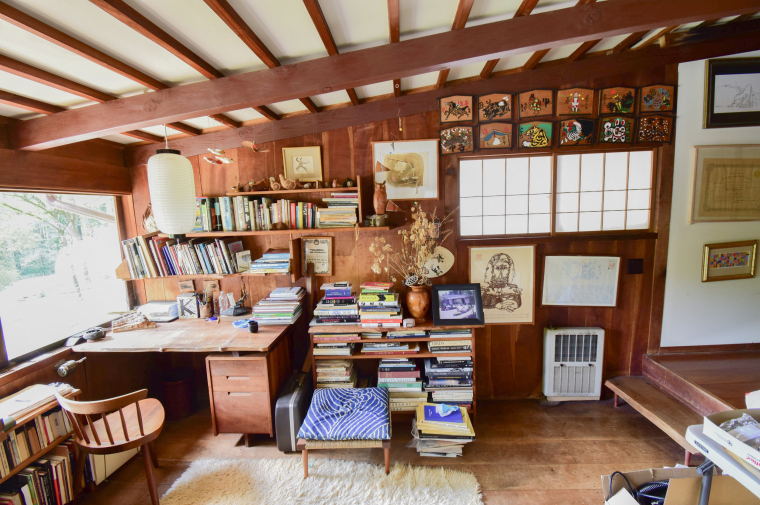January 7, 2020
Current Students Xue Fei Lin & Zhen Ni Win Second Place at The Big Picture: Revealing Germantown’s Assets Competition

Integrate transit stops with public spaces to establish major HUBs as community gathering center. Improve streetscapes with uniform trees and planters. Install street amenities such as banners on light poles to establish and reinforce sense of place. Encourage outdoor seating to enhance street vibrancy and sense of security.
Close
Xue Fei Lin & Zhen Ni's proposal for Chelten HUBIntegrate transit stops with public spaces to establish major HUBs as community gathering center. Improve streetscapes with uniform trees and planters. Install street amenities such as banners on light poles to establish and reinforce sense of place. Encourage outdoor seating to enhance street vibrancy and sense of security.
Xue Fei Lin & Zhen Ni's proposal for Chelten HUBThe proposal recognizes the five traffic nodes as important HUBs and by focusing development around them, hopes to create catalytic impact on their adjacent streets to ultimately encourage the adaptive reuse of vacant stores and infill developments on vacant lots. These HUBs are envisioned as the integration of transit stops and public open spaces. The goal aims to increase walkability, improve transit accessibility, reduce vehicle miles travelled, and densify land use to promote an urban pedestrian-friendly environment.
Xue Fei Lin & Zhen Ni's proposal for Chelten HUBSite Challenges: high store vacancies, ineffective use of land with excessive parking lots, a lack of public open spaces, and rich yet under-utilized community resources. Site Strengths: profound history, active pedestrian foot traffic and transit ridership The study area is strategically bounded by major traffic nodes, with the Germantown and Chelten Regional Rail Stations on the two ends, and three busy transit stops spread at equal increments in between at the intersections of W. Chelten Ave and Wayne Ave, W. Chelten Ave and Greene St., and W. Chelten Ave and Germantown Ave. HUB seeks to adopt a transit-oriented development approach to embrace the history and resources within the study area to establish Chelten Ave as a major commercial and transit corridor.
Xue Fei Lin & Zhen Ni's proposal for Chelten HUBShort-Term: Enhance streetscape by adding trees and planters. Clean streets by removing trash, repairing curbs and pavements to improve pedestrian experience. Install uniform street trash cans, street lights, and street signs to direct visitors to community resources and identify important historic sites. Install banners on light poles to establish sense of place. Regularly clean streets to maintain quality streets. Medium-Term: Improve the appearance of storefronts by cleaning up graffiti and repairing broken windows. Clean vacant lots to host temporary events such as farmer’s markets and community events. Convert vacant lots around major hubs into public open spaces and provide amenities such as seating. Renovate and improve the quality of regional rail stations and install consistent bus stations to establish a sense of place and an urban environment. Implement better parking regulations and enforcements to enhance street quality and traffic safety. Long-Term: Establish the five transportation nodes as ma
Xue Fei Lin & Zhen Ni's proposal for Chelten HUBBy concentrating public spaces with transit nodes and providing amenities to serve both needs, these HUBs will become community centers spread along Chelten Ave. The improvements on the major HUBs established will mutually reinforce one another to increase walkability, improve transit ridership and frequency, encourage multi-modal travel and ultimately reduce vehicle traffic to transform the entire Chelten Ave into a walkable transit corridor. These HUBs will become nodes that connect community resources together.
Xue Fei Lin & Zhen Ni's proposal for Chelten HUBIn the short-term, vacant lots will be cleaned to encourage temporary events such as farmer’s markets and community festivals. In the long-term, the vibrancy of the commercial corridor will encourage more infill developments to densify land use in the neighborhood and curate a mixed-use environment.
Xue Fei Lin & Zhen Ni's proposal for Chelten HUBThe HUBs are envisioned as an integration of transit stops and public space. By concentrating public spaces with transit nodes and providing amenities to serve both needs, these HUBs will become community centers spread along Chelten Ave. The concentration of child day care centers along Chelten Ave also suggests for more children-friendly playgrounds to be integrated into these HUBs.
Xue Fei Lin & Zhen Ni's proposal for Chelten HUBBus stops as exhibits of historical neighborhood photos to provide information on how the street looked like in the past and emphasize community history. Signs at regional rail stations to direct visitors to community resources and historic sites. Bulletin providing guidance to community events. Murals to exhibit the history of Germantown. Encourage historic-themed bike tours to attract visitors to Germantown.

 View Slideshow
View Slideshow


